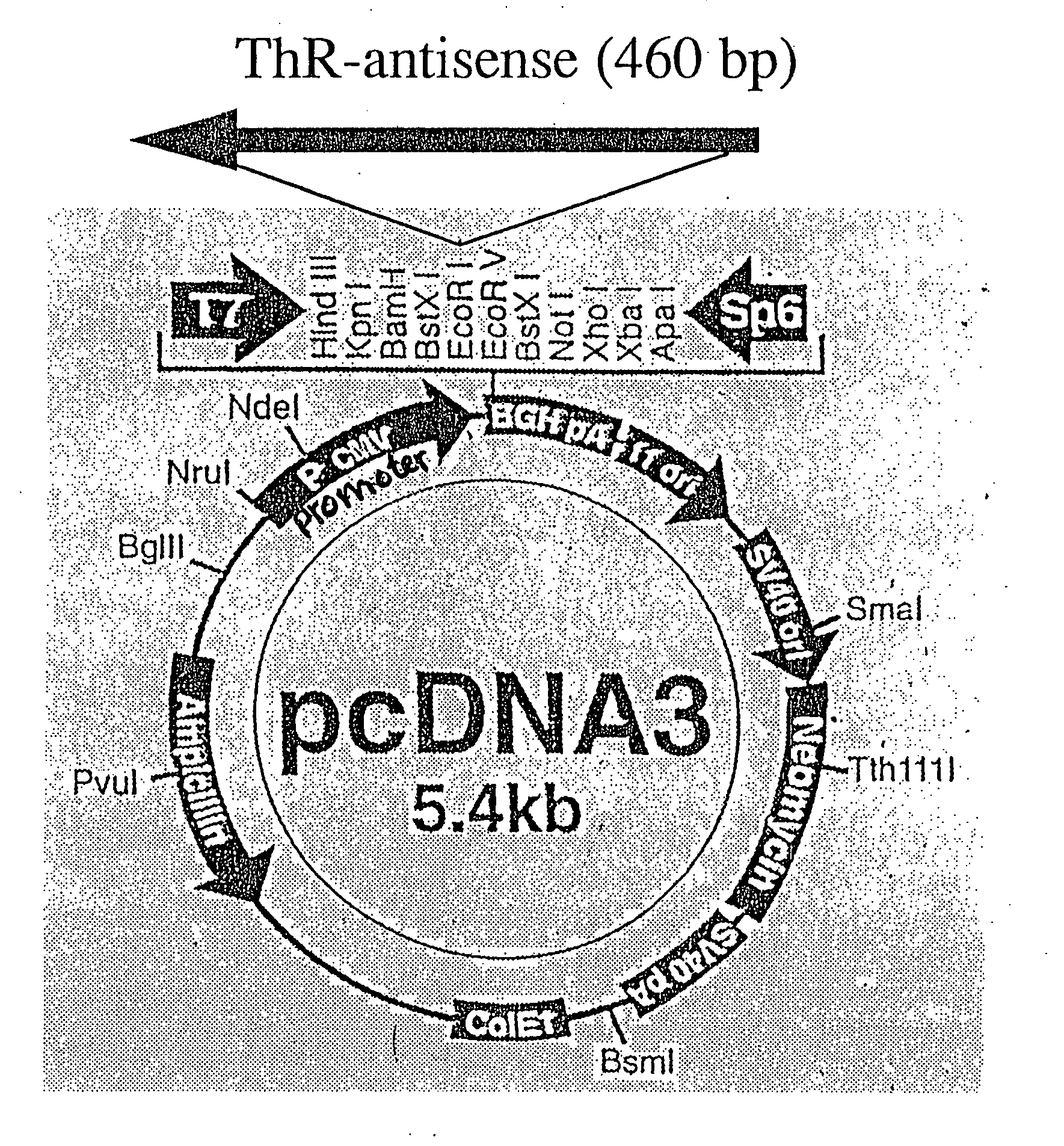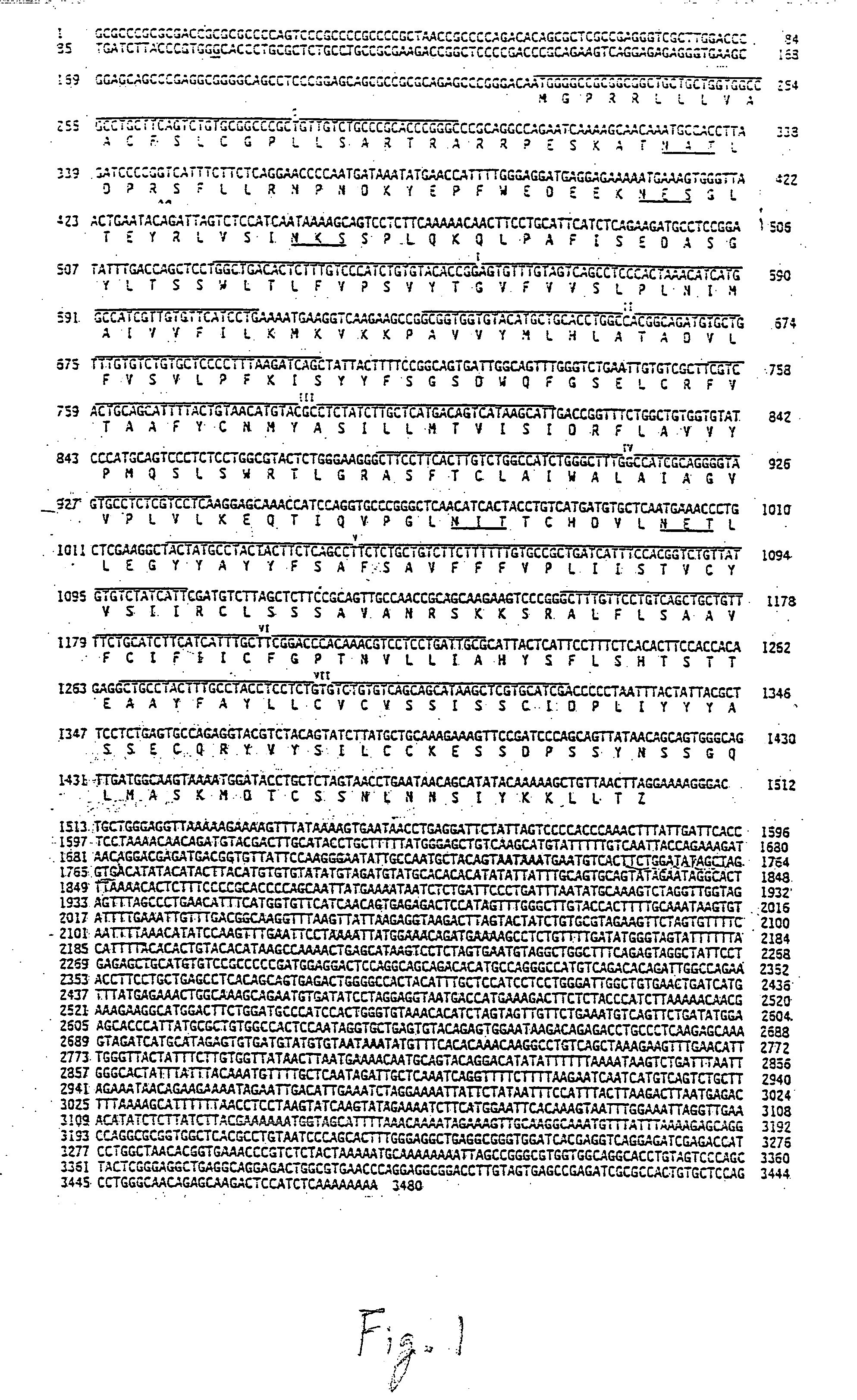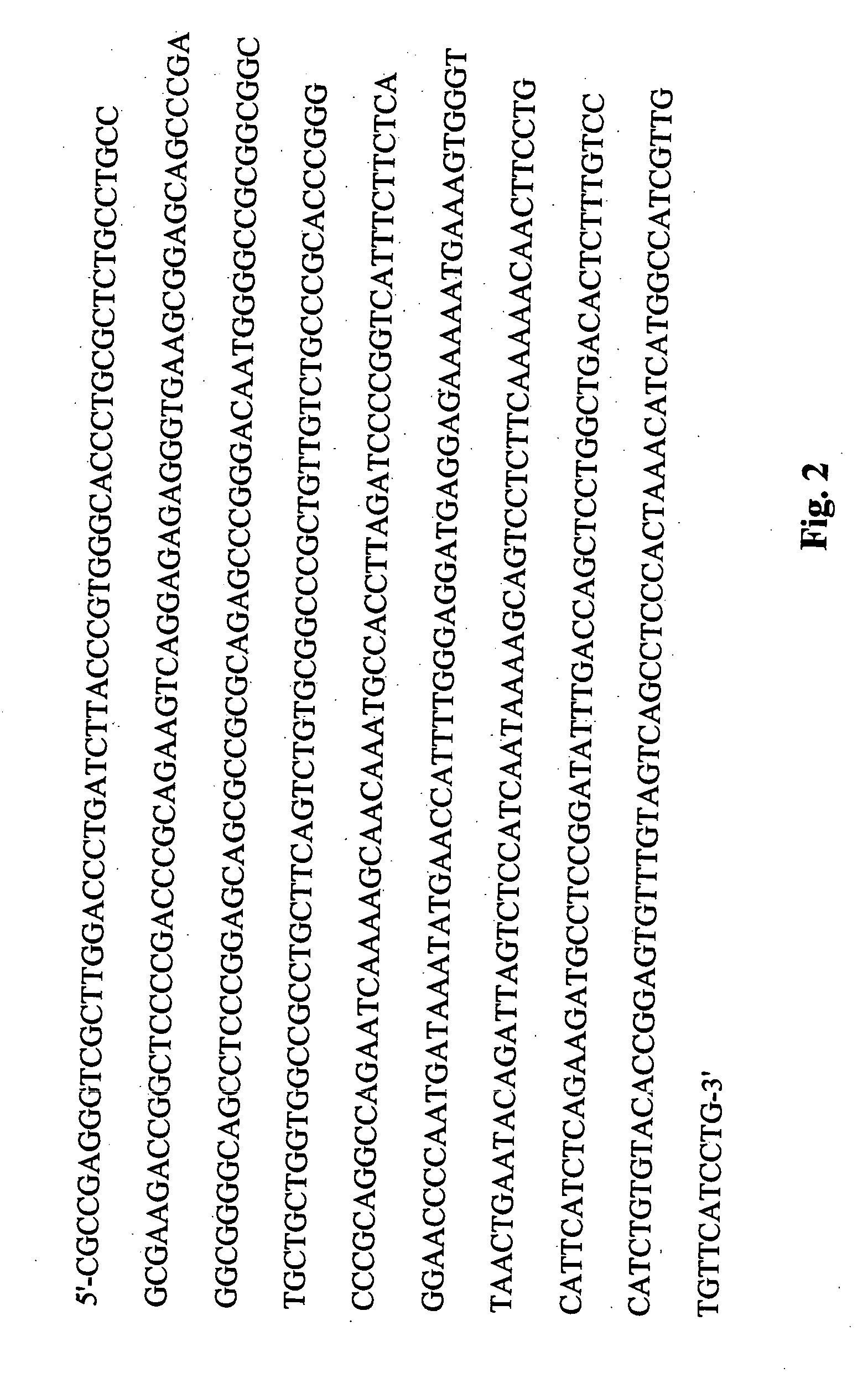Method for treatment of invasive cells
a technology of invasive cells and molecules, applied in the direction of drug compositions, peptide/protein ingredients, genetic material ingredients, etc., can solve the problems of complex process by which epithelial cells become invasive and have not been fully elucidated, so as to improve the implantation of human embryos and improve the effect of implantation
- Summary
- Abstract
- Description
- Claims
- Application Information
AI Technical Summary
Benefits of technology
Problems solved by technology
Method used
Image
Examples
example i
ThR Expression in Breast Carcinoma Cell Lines
[0046] In a preliminary experiment, a panel of mammary carcinoma cells was surveyed for a possible correlation between the level of ThR expression and established degrees of metastasis (FIG. 4). The cell lines used included one near-normal diploid immortalized breast epithelial cell line (MCF10A) originating from fibrocystic disease, and 6 tumor cell lines exhibiting different doubling times, tumorigenicity and metastases in nude mice. Of these cell lines, MDA-435 (a highly metastatic cell line), and MCF10AT3B (ras transfected fibrocystic epithelium reestablished several times from lesions formed in nude mice), were compared to medium metastatic (MDA-231 and MCF10AT, ras transfected fibrocystic cells), or carcinoma cells exhibiting no metastatic potential (ZR-75 and MCF-7 cells). As shown in FIG. 4, high levels of ThR mRNA were found in the highly aggressive cells (lanes A, D) as compared to moderate levels in MDA-231 and ras transfected...
example 2
ThR Expression in Human Breast Tissue Specimens
[0049] ThR gene expression and localization in vivo was studied in formalin fixed paraffin embedded human breast carcinoma specimens as compared to normal mammary sections obtained from reduction mammoplasty. ThR expression was examined in primary breast tumors representing poor to benign prognosis. In situ hybridization analysis using a ThR RNA probe (corresponding to nucleotide nos. 320-570 of the sequence of FIG. 1) was performed with an archival set of paraffin embedded biopsy specimens. A total of 10 normal-breast tissue specimens, and 8 specimens of infiltrating ductal carcinoma were analyzed. The invasive carcinoma specimens were selected from typical infiltrating duct carcinoma of high nuclear grade with numerous atypical mitotic figures and with evidence of vascular invasion and lymph node metastases.
[0050] As demonstrated in FIG. 6, hybridization of a ThR antisense RNA probe to invasive duct carcinoma specimens resulted in s...
example 3
Antisense ThR Inhibits Metastatic Breast Carcinoma Cell Invasion
[0051] To assess the invasion properties of aggressively metastatic breast carcinoma cells, the Matrigel in vitro invasion assay was applied. For this purpose, a reconstituted matrix of basement membrane was utilized to coat porous filters, in order to closely mimic natural barriers in a Boyden chamber. As a chemoattractant source, fibroblast conditioned medium was placed in the lower compartment [7]. The Matrigel invasion assay confirmed the expected differential metastatic properties of the carcinoma cell lines. High levels of invasion through Matrigel were obtained with MDA-435 and MDA-231 cells (FIGS. 7, D&C). MCF10AT3B-ras transfected fibrocystic cells invaded the Matrigel to a lower extent (FIG. 7, E), while no movement was detected with the MCF10AT, MCF-7, or ZR-75 non-metastatic cell lines (FIGS. 7, F & A,B, respectively).
[0052] To analyze the impact of reduced ThR expression in the highly metastatic cells, MD...
PUM
 Login to View More
Login to View More Abstract
Description
Claims
Application Information
 Login to View More
Login to View More - R&D
- Intellectual Property
- Life Sciences
- Materials
- Tech Scout
- Unparalleled Data Quality
- Higher Quality Content
- 60% Fewer Hallucinations
Browse by: Latest US Patents, China's latest patents, Technical Efficacy Thesaurus, Application Domain, Technology Topic, Popular Technical Reports.
© 2025 PatSnap. All rights reserved.Legal|Privacy policy|Modern Slavery Act Transparency Statement|Sitemap|About US| Contact US: help@patsnap.com



